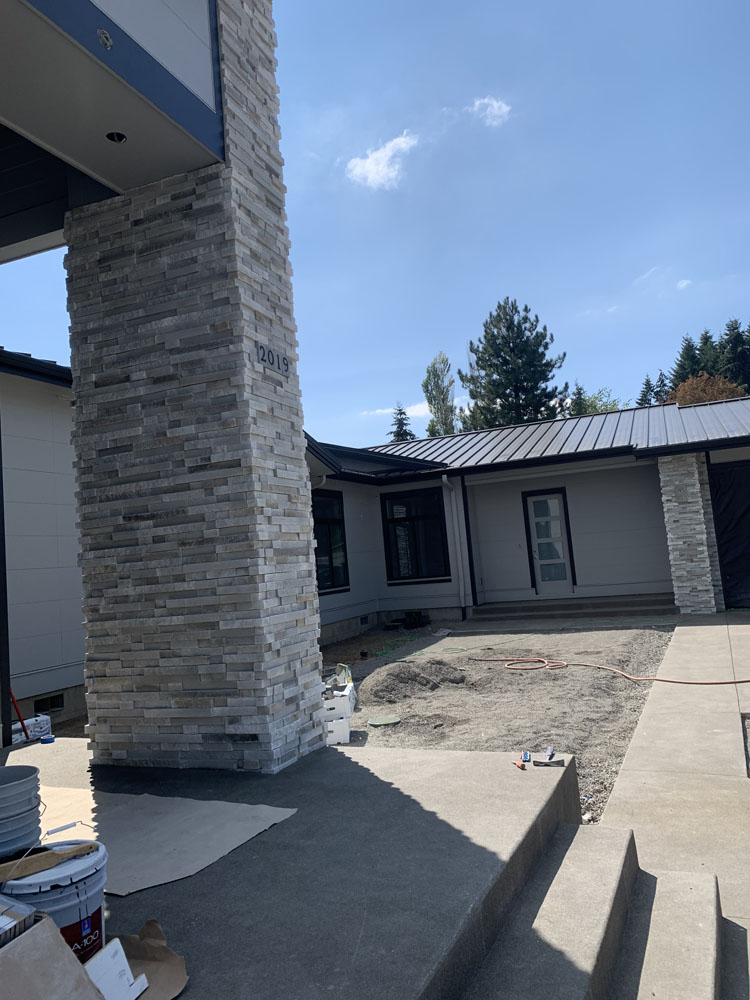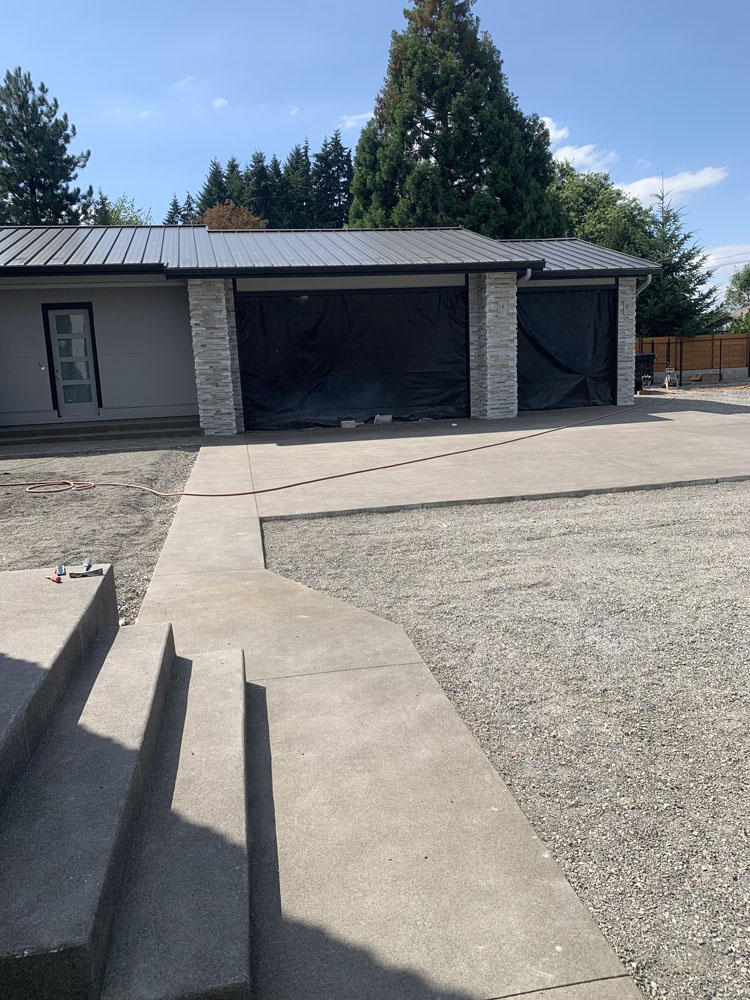Creating a stone walkway can bring a touch of elegance and functionality to your backyard. Whether you’re looking to enhance your garden path, create a functional outdoor space, or simply improve your home’s curb appeal, a DIY stone walkway is an excellent project to undertake. In this comprehensive guide, we’ll walk you through every step of the process, from planning to execution, ensuring that you have all the information you need for a successful masonry walkway.
Why Choose a Stone Walkway?
Stone walkways are not only visually appealing but also durable and versatile. They can withstand harsh weather conditions and require minimal maintenance compared to other materials. Plus, they blend seamlessly into natural landscapes. But what about other options like brick walkways? Here’s why choosing stone might be the best option for your backyard.
Benefits of Stone Walkways
Durability: Natural stones like granite and slate resist cracking and fading. Aesthetic Appeal: The variety of colors and textures available allows for unique designs. Eco-Friendly: Natural stones have a low environmental impact compared to synthetic materials. Versatility: Stones can be used in various settings, from rustic gardens to modern landscapes.Comparing Stone Walkways with Brick Walkways
While both materials offer advantages, stone walkways provide greater flexibility in design. Brick walkways are typically more uniform in size and color, which can be Masonry Contractor limiting for creative designs. However, brick is also highly durable and provides an old-world charm that some homeowners prefer.
Planning Your DIY Stone Walkway Project
Before diving into construction, proper planning is essential for success.

Assessing Your Space
- Measure the area where you want the walkway. Consider foot traffic patterns; high-traffic areas will require more robust materials.
Choosing the Right Type of Stone
There are several types of stones suitable for walkways:
Flagstone: Flat slabs ideal for creating irregular paths. Slate: Offers rich colors but may chip easily. Granite: Extremely durable but heavier and harder to work with.Each type has its pros and cons based on aesthetics and durability.
Deciding on the Design
What style do you envision? A straight path? A meandering trail? Sketch out several designs before selecting one that fits best with your landscape.
Gathering Materials for Your DIY Stone Walkway
Once you've planned your project, it’s time to gather your materials.
Essential Tools You’ll Need
- Shovel Rake Level Rubber mallet Garden hose (for layout)
Materials Checklist
| Material | Quantity | |--------------------|---------------| | Natural stones | As needed | | Sand or gravel | 1 cubic yard | | Landscape fabric | 1 roll | | Edging material | As needed |
Ensure you source quality materials from reputable suppliers to guarantee longevity.
Preparing Your Site for Construction
Preparation is crucial in ensuring your stone walkway remains stable over time.
Clearing the Area
- Remove any grass or existing vegetation in the designated area. Dig down about 4–6 inches depending on the depth of your stones.
Setting Up Edging Materials
Edging helps define the walkway's boundaries:
Use wood planks or metal edging for straight lines. For curved designs, consider flexible plastic edging.How to Build a DIY Stone Walkway in Your Backyard
Now comes the fun part—building your walkway! Follow these steps closely:
1. Laying Down Landscape Fabric
- Spread landscape fabric over the prepared area to prevent weed growth while allowing water drainage.
2. Adding Gravel Base
- Pour about 2–3 inches of gravel over the fabric. Use a rake to level it out evenly and compact it down using a tamper.
3. Arranging Your Stones
- Start placing stones according to your design layout. Leave gaps between stones if you want grass or ground cover plants to grow through them later.
4. Securing Stones
- Use sand or gravel between stones as filler; this adds stability while allowing drainage. Tap each stone firmly into place with a rubber mallet.
5. Final Touches
- Add additional sand if needed after placing all stones. Ensure everything is level and visually appealing before stepping back to admire your work!
Maintaining Your Stone Walkway
To keep your masonry walkway looking great year-round:
Regular Cleaning Tips
- Sweep away debris regularly. Use a pressure washer occasionally for stubborn stains or moss growth.
Repairing Loose Stones
Don’t fret if some stones become loose over time; simply lift them up, add fresh sand or gravel underneath, and secure them again!
Common Challenges When Building a Stone Walkway
No project is without its hurdles! Here are some common issues you might encounter along with solutions:
1. Uneven Ground
If you find uneven surfaces during installation:

- Make sure you're digging deep enough before laying down gravel!
2. Water Drainage Issues
If puddles form:
- Ensure there’s an adequate slope away from structures by adjusting stone placement accordingly.
FAQ Section
Q1: How long does it take to build a stone walkway?
A1: Depending on size and complexity, expect around 1–3 days of work spread over weekends for larger projects.
Q2: Can I use recycled bricks instead of new stones?
A2: Absolutely! Recycled bricks can add character while being eco-friendly options too.
Q3: What should I do if my stones shift after installation?
A3: Simply remove affected stones, re-level the base beneath them then replace them properly using sand as filler again!
Q4: Is it necessary to use landscape fabric?
A4: While not strictly necessary, it significantly reduces weed growth which saves maintenance effort later on!
Q5: What type of sealant should I use on my walkway?
A5: For most natural stone surfaces an impregnating sealant works best; apply annually for maximum protection against stains!
Q6: Can I build my pathway during winter months?
A6: It’s generally better done during warmer months when ground isn’t frozen—this ensures easier digging & better bonding between layers too!
Conclusion
Building a DIY stone walkway in your backyard adds beauty while enhancing functionality at home—what’s not to love? With careful planning, quality materials selection & determination anyone can create their own stunning masonry masterpiece! Remember these tips as well as common challenges along this journey so that when completed—it becomes both practical yet aesthetically pleasing addition everyone notices right away! Happy building!